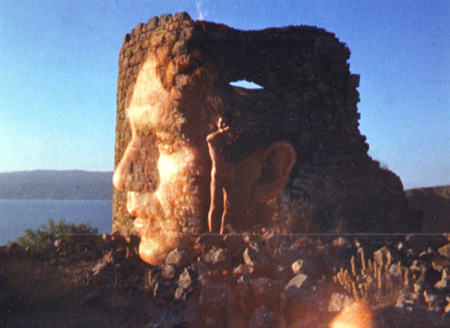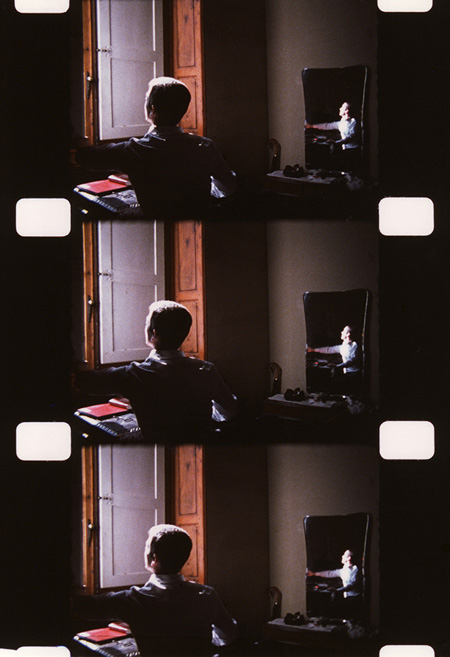Winged Dialogue

“Winged Dialogue details with growing clarity the desperate beauty and sexuality of the body animated by it’s soul, essence blindly reaching out, touching, in brilliant patterns through and beyond those of the vanishing images, expressed vividly in the after-image on the mind, on the soul’s eye”. (Tom Chomont).
Plan of Brussels
“Shedding all traces of narrative in Plan of Brussels, Beavers filmed himself in a hotel room, both at his work desk and lying naked on the bed, while in rapid rhythmic cutting, and sometime in superimposition, the phantasmagoria of people he met in Brussels and images from the streets flood his mind”. (P. Adams Sitney).
From the Notebook of ...

From the Notebook of ... opens with a series of instructions, written by Beavers in neat blue script: ‘Close the window shutting to a crack, film my reflection in the mirror as my hand moves in front of the mirrored light.’ In the next sequence, the actions are performed for the camera: Beavers opens and shuts a window, and his face moves in and out of the light. This same effect of rhythmic obfuscation and revelation is achieved through the frequent use of props such as mattes or color filters, which frame and tint the field of vision. These techniques reference the camera’s own framing and representing function.
The film was shot in Florence and takes as its point of departure Leonardo da Vinci’s notebooks and Paul Valéry’s essay on da Vinci’s process. These two elements suggest an implicit comparison between the treatment of space in Renaissance art and the moving image. The film marks a critical development in Robert Beavers’ work in that he repeatedly employs a series of rapid pans and upward tilts along the city’s buildings or facades, often integrating glimpses of his own face. As Beavers’ notes in his writing on the film, the camera movements are tied to the filmmakers’ presence and suggests his investigative gaze. (Henriette Huldisch)
The Painting

“The Painting intercuts shots of traffic navigating the old-world remnants of downtown Bern, Switzerland, with details from a 15th-century altarpiece, “The Martyrdom of St. Hippolytus”. The painting shows the calm, near-naked saint in a peaceful landscape, a frozen moment before four horses tear his body to pieces while an audience of soigné nobles look on; in the movie’s revised version, Beavers gives it a comparably rarefied psychodramatic jolt, juxtaposing shots of Gregory Markopoulos, bisected by shafts of light, with a torn photo of himself and the recurring image of a shattered windowpane”. (J. Hoberman)